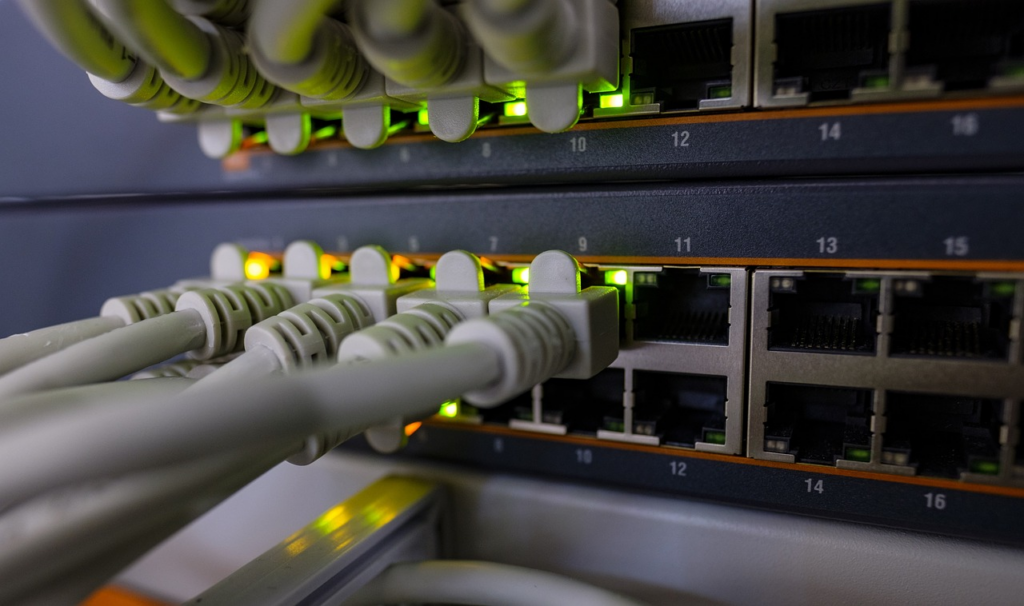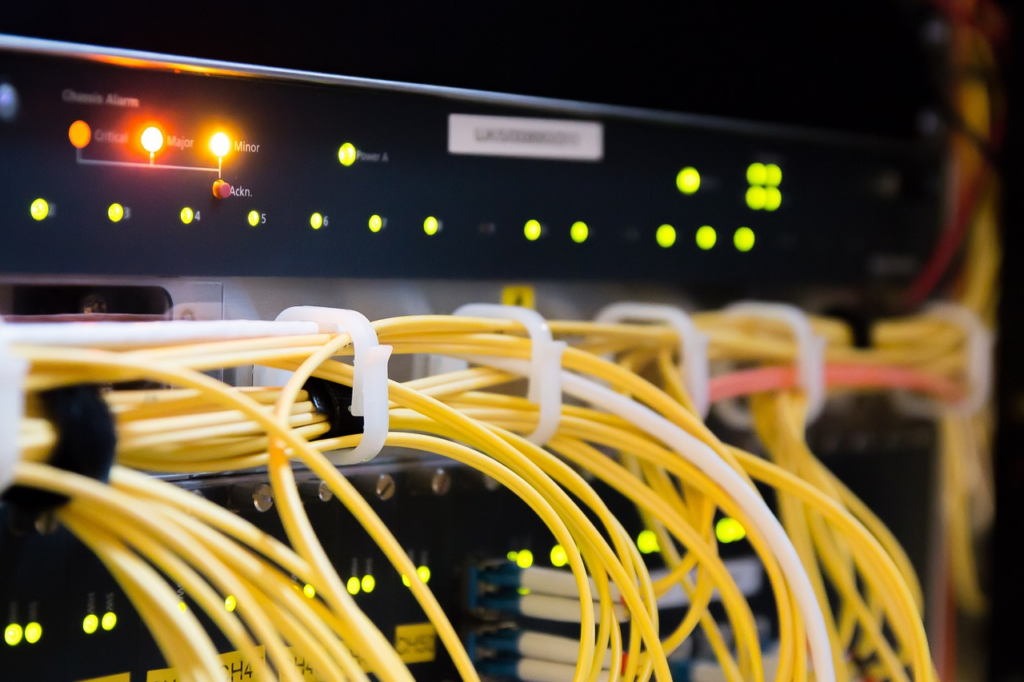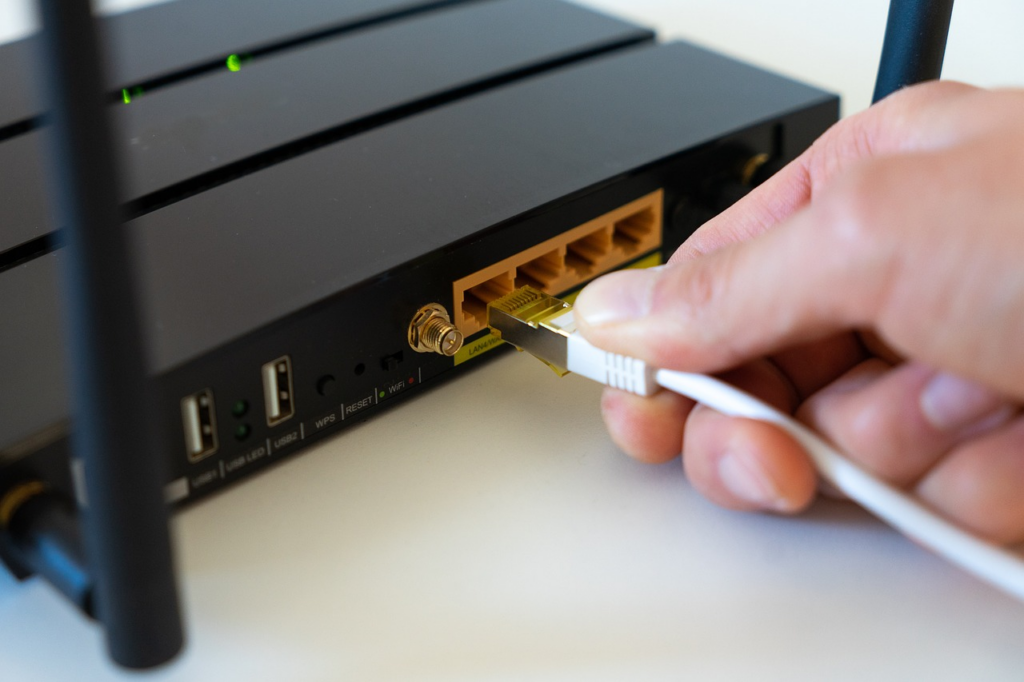Have you ever experienced the frustration of being in the middle of an important task, about to finish watching your favorite show or even trying to finish a crucial video call, when you suddenly realize that your Internet connection has failed? If so, you're not alone. Most of us have experienced this annoying scenario at some point in our digital lives. And often, the cause of this problem lies in the router itself.
In this article, we'll explore the various reasons why your router may be showing as connected but without Internet access, and what you can do to solve this problem. From basic checks to advanced solutions, here are some steps you can take to solve this common dilemma.
Understanding the situation
Before we start diagnosing and solving the problem, it's essential to understand the possible causes behind the "connected, no Internet" message displayed by your router. Here are some of the most common reasons:
- Connection problems with the Internet provider: Sometimes the interruption can be due to problems with the Internet provider's infrastructure. There could be an outage in the area, maintenance problems or even a server failure.
- Router settings: Incorrect settings on the router, such as incorrect IP addresses, misconfigured DNS or problems with PPPoE (Point-to-Point Protocol over Ethernet) authentication, can result in a connection without Internet.
- IP address conflicts: If there are IP address conflicts on the local network, this can cause connectivity problems.
- Hardware problems: Faults in the router's components, such as the network card, Wi-Fi antennas or even the modem itself, can lead to connection problems.
Now that we have a basic understanding of the possible causes, let's look at the steps you can take to solve the problem.
Troubleshooting steps
When we come across the message "connected, no Internet" on our router, it's easy to feel frustrated and lost. However, this is not the time to panic, but to take a systematic approach to solving the problem.

In this section, we'll explore a series of steps you can take to diagnose and resolve connectivity problems with your router. From physical checks to configuration adjustments, each step is designed to help you identify and resolve the possible causes behind the disconnection, allowing you to restore your Internet connection quickly and effectively.
1. Check the physical connection
Checking the physical connection is often the first crucial step when dealing with Internet connectivity problems. Even though it may seem obvious, it's surprising how many times a disconnection problem can be attributed to a loose or poorly connected cable. This step is essential because it lays a solid foundation for later diagnosis, eliminating the possibility that the problem is simply related to a faulty physical connection.
When carrying out this check, it is important to carefully examine all the cables connected to the router and modem. Start with the power cable, ensuring that it is firmly connected to both the router and the power supply. Next, check the Ethernet cables that connect the router to the modem and any other devices, such as computers or games consoles. Make sure that these cables are fully inserted into the corresponding ports and that there are no signs of physical damage to the cables or connectors.
In addition, it's worth checking the cables themselves for any visible indicators of damage. Sometimes cables can be bent, twisted or damaged in other ways, which can interfere with the proper transmission of data. Replacing any damaged cables is a simple but effective measure to rule out connectivity problems related to the physical integrity of the cables.
Another important aspect to consider when checking the physical connection is the location of the devices. Make sure that the router and modem are positioned in suitable locations, with good ventilation and away from sources of interference, such as large electronic devices, microwaves or cordless phones. This can help ensure a stable and reliable connection by minimizing possible obstacles that could interfere with the Wi-Fi or Ethernet signal.
2. Restart the router and modem
Restarting your router and modem is one of the simplest and most effective steps you can take when dealing with Internet connectivity problems. This simple action often resolves a variety of temporary problems that can arise during normal use of network devices. Here are a few reasons why restarting your router and modem is so effective:
1. cleaning up temporary problems
Over time, network devices such as routers and modems can accumulate small temporary problems that affect their ability to function properly. This can include software errors, memory congestion or internal communication failures. Restarting devices is a quick and easy way to clear up these temporary problems and restore normal operation.
2. Renewing connections
Restarting the router and modem allows them to establish new connections with the Internet provider and with the devices connected to the network. This can be especially useful if there are communication problems between the router, modem and Internet provider. By restarting the devices, you give them the opportunity to reconnect and resolve any communication problems that may be preventing access to the Internet.
3. Updating settings
Sometimes, changes made to router or modem settings may not be applied immediately or may cause conflicts that affect connectivity. Restarting the devices restores the settings to their default values, eliminating any unapplied changes or configuration conflicts that may be causing problems.
When restarting your router and modem, follow these simple steps:
- Switch off the router and modem by removing the power cable from each device. It is important to turn off both devices to ensure that all components are restarted correctly.
- Wait at least 30 seconds to 1 minute. This waiting period allows the capacitors in the devices to completely discharge, ensuring a complete reboot.
- Reconnect the power cable to the modem and wait a few minutes for it to restart completely. Then repeat the process for the router.
- After restarting both devices, check that the indicator lights on the modem and router are working normally. This may indicate a successful Internet connection.
Try connecting to the Internet on your devices and see if the problem has been resolved. If you are still experiencing connectivity problems, you can proceed to other troubleshooting steps.
3. Check the indicator lights
Checking the indicator lights on your router and modem is an important step in the process of troubleshooting Internet connectivity. These lights provide crucial information about the state of the connection and can help identify possible problems that are preventing Internet access.
1. power light
The power light indicates whether the router or modem is switched on and receiving adequate power. If this light is off or flashing, it may indicate a problem with the power supply or the device itself. Check that the power cable is correctly connected and that there is a problem with the power supply.
2. Internet connection light (WAN)
This light indicates whether there is a connection between the router and the modem, and whether the modem is receiving a signal from the Internet provider. If this light is off or flashing, it may indicate a problem with the Ethernet cable connecting the router to the modem, a fault with the modem or an interruption in the ISP's Internet service.
3. LAN (local area network) lights
The LAN lights indicate whether there are active connections on the router's various Ethernet ports. If the lights corresponding to the connected devices are off or flashing, this may indicate a problem with the Ethernet cables, the connected devices or the router itself.
4. Wi-Fi lights
If the router has Wi-Fi capability, the Wi-Fi lights indicate whether the wireless network is active and transmitting a signal. If these lights are off or flashing, it could indicate a problem with the router's Wi-Fi configuration, interference from other wireless networks or hardware problems.
5. Other indicator lights
Some routers may have additional lights that indicate different states or functionalities, such as status lights, activity lights or security lights. Check your router's user manual to understand the specific meaning of each light and how it can help with troubleshooting.
4. Test the connection with other devices
Testing the connection with other devices is an important step in the Internet connectivity troubleshooting process, as it helps determine whether the problem is related to a specific device or whether it is broader and affects the entire network. This step is especially useful for identifying whether the problem lies with the router, the modem or an individual device.
1. identifying local problems versus network problems
By testing the connection with other devices, you can determine whether the problem is localized to a single device or whether it affects the entire network. If other devices are also unable to connect to the Internet, this suggests that the problem lies with the network as a whole, which could be caused by problems with the router, modem or connection to the Internet provider. On the other hand, if only one specific device is having connection problems, this suggests that the problem may be related to that specific device.
2. Variety of devices
When testing the connection with other devices, it is important to use a variety of devices, such as smartphones, tablets, laptops or desktop computers. This will help determine whether the problem is present on all types of devices or whether it is specific to one type of device in particular. For example, if all mobile devices are having connection problems, but desktop devices are connected, this could suggest a problem with the router's Wi-Fi configuration.
3. Checking different operating systems
As well as using a variety of devices, it's useful to test the connection on devices running different operating systems, such as Windows, macOS, iOS or Android. This will help determine whether the problem is related to a specific operating system or is independent of the operating system. For example, if only devices running Windows are having connection problems, this could suggest a configuration problem specific to the Windows operating system.
4. Diagnosis of hardware versus software problems
By testing the connection with other devices, you can determine whether the problem is related to the device's hardware or software. If a specific device is having connection problems, try restarting the device and seeing if that solves the problem. If the problem persists after rebooting, you may need to investigate network settings or possible hardware problems, such as a faulty network card.
5. Confirm connectivity with other services
In addition to testing the Internet connection, you can also test connectivity with other online services, such as streaming video, accessing websites or messaging applications. This will help you determine whether the problem is related to general Internet connectivity or is specific to certain services or protocol ports.
5. Check your router settings
Access the router's settings by typing the default IP address (usually 192.168.1.1 or 192.168.0.1) into a web browser and logging in with the appropriate credentials. Check that the settings, such as IP address, subnet mask, default gateway and DNS servers, are correct. If necessary, reconfigure the settings according to your Internet provider's specifications.
6. Update your router's firmware
Just like any other electronic device, routers also receive firmware updates to fix bugs and improve performance. Check if firmware updates are available for your router and install them, following the manufacturer's instructions. This may resolve known compatibility and stability issues.
7. Check for IP address conflicts
IP address conflicts can occur when two devices on the same network have been assigned the same IP address. To fix this, you can configure the router to assign IP addresses dynamically (using DHCP) or manually assign unique IP addresses to each device on the network.

8. Restore factory settings
If all other solutions fail, you can try restoring the router to factory settings. This will reset all the settings to factory defaults, eliminating any configuration problems that may be causing the connectivity problem.
Remember that this will erase all the custom settings you made previously, so make sure you back up the important settings before proceeding.
Look for solutions
Experiencing Internet connectivity problems can be frustrating, especially when the router shows a "connected, no Internet" connection. However, by following the troubleshooting steps mentioned above, you can often identify and resolve the problem yourself.
If you've tried all the suggested solutions and are still experiencing connectivity problems, it may be time to contact your Internet provider or the router manufacturer's technical support for further assistance. Remember that connectivity problems can be caused by a variety of factors, and sometimes a professional may be needed to diagnose and resolve the problem.
We hope this guide has been useful in helping you solve connectivity problems with your router. With a little patience and knowledge, you'll be back surfing the web in no time.
See also: What is the best calorie counting app?
March 31, 2024

She has a degree in Literature - Portuguese/English, and is the creator of the Escritora de Sucesso website. As a writer, she seeks to expand everyone's knowledge with relevant information on various subjects. At Trend-Topics, she brings news and content ranging from entertainment to the country's economic situation.






